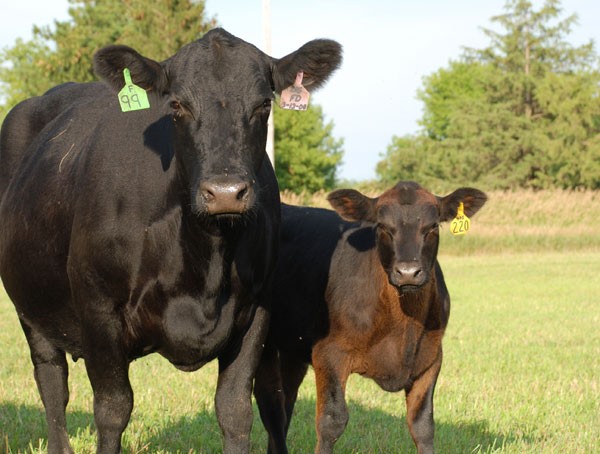"Purchasing and selling decisions need to be made in a timely manner and without emotion. Volatility in the cattle markets is not likely to decrease and the long-term outlook is bearish; however, given good cattle marketing and price risk management, profitability is achievable.”
November 13, 2015

Never minding current market weakness, herd expansion and the promise of increasing beef production will weigh on cattle economics longer term.
On an annual basis, analysts with the Livestock Marketing Information Center (LMIC) forecast in this week’s Livestock Monitor that fed cattle prices will drop year-over-year by 3% to 5% in 2016 and another 1% to 4% in 2017.
“In calendar year 2016, calf prices may decline 10% to 12% year-over-year,” LMIC analysts say. “Importantly, the percentage drop from 2015’s level could be smallest in the fourth quarter. Calendar year 2017 is expected to bring further erosion in calf prices, down 1% to 5% from 2016’s.”
At the same time, investors’ rapt fascination with commodities—as the U.S. and some other countries began prying themselves from the Great Recession—could be coming to an end.
“While I am optimistic toward agriculture, it could be argued that commodities in general are on the down slide as this commodity super cycle winds down. This will mean more pressure on profit margins, especially for grain farmers,” explained an Illinois banker, as part of the recent Agricultural Finance Monitor published by the Federal Reserve Bank of St. Louis.

BEEF Seedstock 100
Looking for a new seedstock provider? Use our BEEF Seedstock 100 listing to find the largest bull sellers in the U.S. Browse the Seedstock 100 list here.
Results for the report are based on responses from 38 agricultural banks located within the boundaries of the Eighth Federal Reserve District, which comprises all or parts of Arkansas, Illinois, Indiana, Kentucky, Mississippi, Missouri and Tennessee.
“I am optimistic because I do not think this downturn will be as severe as the 1980s. Many agricultural producers have increased their net worth and follow good business practices, so they could continue for quite some time with tight margins,” the lender explained.
Brenda Boetel, agricultural economist at the University of Wisconsin-River Falls, points out in the most recent In the Cattle Markets that some producers grew complacent with marketing and price risk management the past couple of years as they had the opportunity to sell into up-trending markets.
“Those who did explore different marketing and hedging strategies found that the risks didn’t necessarily warrant the high costs associated with changing marketing strategies,” Boetel explains. “With these recent market developments, now is the time to reconsider managing price risk and reviewing marketing strategies. Purchasing and selling decisions need to be made in a timely manner and without emotion. Volatility in the cattle markets is not likely to decrease and the long-term outlook is bearish; however, given good cattle marketing and price risk management, profitability is achievable.”
You might also like:
Crunch the numbers before you buy those heifers
8 apps for ranchers recommended by ranchers
Act now to minimize cold stress on cattle this winter
Why you must remove net wrap on round bales before feeding to cattle
About the Author(s)
You May Also Like





